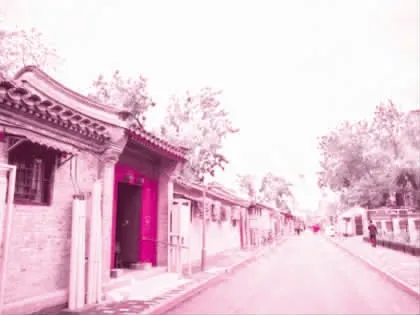四川蒋建平(特级教师)
北京的胡同已不再是小小的街道,它传载着北京几百年的历史和文化。

?
难词探意
1.architecture/'ɑːkɪtektʃə(r)/n.建筑学;建筑设计;建筑风格
2.decrease/dɪ'kriːs/v.(使大小、数量等)减少
3.status/'steɪtəs/n.状况;地位

Local officials in Beijing promised to further protect the city's cultural heritage,in particular the narrow streets known as Hutong.
Hutongs are commonly found in the cities of North China,but they are at risk.Beijing is currently believed to have fewer than 1,000 Hutongs,most of which are near the Forbidden City.Only 60 years ago,the number was 3,250.In the old districts of Dongcheng and Xicheng,some people will be asked to move from Hutong houses to avoid further damage to the ancient
architecture.
“On average more than 100,000 people visit the Forbidden City during the National Day holidays.The visits put pressure on the protection of cultural relics,”said the director of the Beijing Municipal Commission of Urban Planning,adding that Hutongs should be protected from human damage.
The government focused on how the protection plans were carried out and how the management of cultural heritage worked.The head of the Xicheng District Government,said the area has 182 cultural relics,many of which were built as far back as the Yuan Dynasty(1271—1368).“The most efficient way is todecreasethe local population to reduce the possibility of causing harm to the heritage.Each community has been required to report thestatusof its cultural heritage,especially Hutongs,and any actions to damage the heritage will be punished.”
No one knows for sure how many Hutongs will be left in the coming 100 years.
Reading Check
1.How many Hutongs have disappeared in the past sixty years in Beijing?
A.Fewer than 1,000.
B.About 2,000.
C.More than 3,000.
D.Over 4,000.
2.What made the protection of cultural relics difficult?
A.Human activities.
B.Residents'attitude.
C.Communities'behavior.
D.The governments'policy.
3.Which of the following is a useful way to protect Hutongs?
A.To attract more visitors.
B.To punish anyone damaging them.
C.To increase the local population.
D.To forbid everyone from getting close to them.
4.What is the author's attitude towards Hutongs?
A.Optimistic.
B.Unclear.
C.Appreciative.
D.Uninterested.
Language Study
Useful expressions
be known as被称为;叫作
at risk处境危险;在危险中
on average平均
put pressure on增加压力
focus on关注;聚焦于
cause harm to造成伤害
Cultural Background
老北京胡同
北京的胡同有上千条,形成于历史上的元、明、清三个朝代,其中大多数形成于13世纪时的元代。胡同的走向多为正东正西,宽度一般不超过九米。胡同两旁的建筑大多是四合院。漫步其中,我们可以欣赏北京优美的风景。



